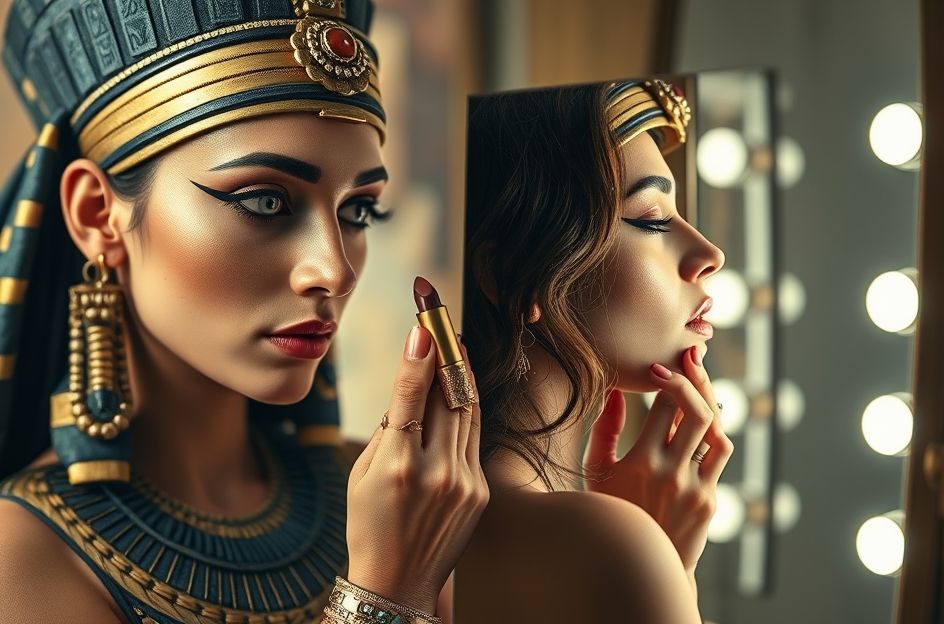The global cosmetics industry is a multi-billion dollar market, with daily make-up application being a common practice for women worldwide. This phenomenon didn’t arise overnight; it’s the result of centuries of evolving beauty standards and cosmetic practices.
Ancient Egyptians were pioneers in cosmetics, prioritizing hygiene and appearance as integral to their spiritual well-being. They believed physical appearance reflected the state of the soul and strived to maintain a neat and pleasant look. This emphasis on appearance naturally led to experimentation with cosmetics to enhance beauty.
The Egyptians developed “mesdemet,” an early form of eyeshadow made from copper and lead ore. They believed the dark pigment warded off evil and provided hygienic benefits, acting as a cleanser and insect repellent. Kohl, a blend of lead, ash, ochre, copper, and burnt almonds, was applied around the eyes in an oval shape. Red clay mixed with water served as blush, and henna was used to color nails orange and yellow.
The Greeks adopted cosmetic practices from the Egyptians. However, their pursuit of a pale complexion sometimes involved using lead-based products, which proved harmful. As the Romans embraced cosmetics, beauty practices became more elaborate. They adorned their nails with sheep’s blood and cooked fat. A Roman saying reflected this obsession: “A woman without paint is like food without salt.”
Following the decline of the Egyptian empire, a pale face became a global beauty ideal. Sun-darkened skin was associated with lower-class women who worked outdoors. Upper-class women, who did not engage in manual labor, maintained lighter complexions. White skin became a symbol of status, indicating wealth and freedom from labor. Women (and sometimes men) used powders containing hydroxide, lead oxide, and carbonate to achieve this pale look. However, this practice often led to lead poisoning.
In the 19th century, chemists developed zinc oxide as a safer alternative, allowing the skin to breathe and preventing lead poisoning. Zinc oxide is still used in cosmetics today.
During the Edwardian era in London, wealthy urban women attended extravagant parties and felt pressure to maintain a youthful appearance. City life, with its smog, poor diets, and lack of exercise, took a toll on their skin. They relied on anti-aging and face creams to conceal imperfections and frequented salons. These salon visits were often conducted discreetly, with women entering through the back to avoid public scrutiny. One notable salon, the House of Cyclax, offered creams and blushes to women seeking to combat the signs of aging.
Today’s women benefit from a vast selection of beauty products, the result of centuries of experimentation and innovation. The cosmetics industry generates billions of dollars annually, proving that the pursuit of beauty remains a constant, even during economic downturns. Modern women owe a debt to their ancestors, whose concerns about personal appearance paved the way for the diverse and sophisticated cosmetic options available today.
